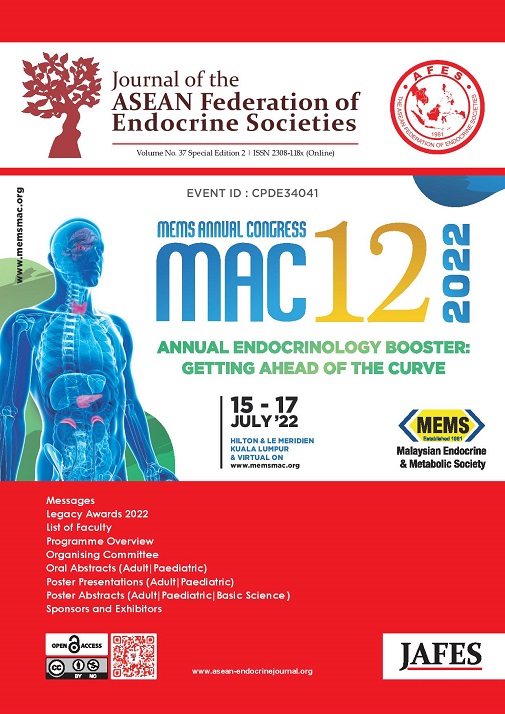MICROANGIOPATHIC HEMOLYTIC ANEMIA IN A CASE OF PHEOCHROMOCYTOMA CRISIS
Keywords:
pheochromocytomaAbstract
INTRODUCTION
Pheochromocytomas are rare neuroendocrine tumours of the adrenal medulla. Pheochromocytoma crisis, a potentially fatal presentation, is characterized by severe hypertension or hypotension with end organ damage occurring spontaneously or precipitated by a stressor such as surgery, stress or medications such as anaesthetic agents, corticosteroids, and metoclopramide. A cascade of life threatening events may occur including myocardial infarction, acute pulmonary oedema, stroke, paralytic ileus, thrombosis, renal failure, diabetic ketoacidosis, and lactic acidosis. Microangiopathic hemolytic anemia (MAHA), an uncommon sequelae of pheochromocytoma crisis or malignant hypertension can occur.
CASE
We report a case of pheochromocytoma crisis presenting with microangiopathic hemolytic anemia. A 58-year-old female with diabetes mellitus, hypertension, and dyslipidemia presented with recurrent vomiting and epigastric pain for 9 days. On arrival, her blood pressure was 177/133 mmHg with a pulse rate of 146 beats/minute. It worsened to 214/146 mmHg following the administration of intravenous metoclopramide. She developed acute kidney injury (AKI) (urea 14.5 mmol/L, creatinine 321.8 umol/L) and MAHA with Coomb’s test negative anemia. Her hemoglobin decreased from 10.6 g/dl to 8.1 g/dl in 2 days, with increased schistocytes from 2.7% to 3.0%, accompanied by reticulocytosis of 4.8%, thrombocytopenia with platelet of 141 k, and raised lactate dehydrogenase of 482 U/L. She received 1-unit packed cell transfusion. Her MAHA and her AKI resolved subsequently following adequate blood pressure control with alpha blockade. Twenty four hour urine metanephrine was elevated with abdominal imaging demonstrated a right adrenal mass (4.0x 4.5x 4.0 cm) supporting the diagnosis of a right adrenal pheochromocytoma. She underwent a right open adrenalectomy with symptoms resolution and normotension after surgery.
CONCLUSION
This case highlights the awareness of detecting a pheochromocytoma crisis and avoiding medication that may induce a pheochromocytoma crisis. High index of suspicion, prompt diagnosis and early initiation of treatment of pheochromocytoma crisis is essential to minimise complications and improve clinical outcomes.
Downloads
References
*
Downloads
Published
How to Cite
Issue
Section
License
Copyright (c) 2022 Shireen Lui Siow Leng, Oh Kok Ming, Tee Hwee Ching, Serena Khoo Sert Kim

This work is licensed under a Creative Commons Attribution-NonCommercial 4.0 International License.
The full license is at this link: http://creativecommons.org/licenses/by-nc/3.0/legalcode).
To obtain permission to translate/reproduce or download articles or use images FOR COMMERCIAL REUSE/BUSINESS PURPOSES from the Journal of the ASEAN Federation of Endocrine Societies, kindly fill in the Permission Request for Use of Copyrighted Material and return as PDF file to jafes@asia.com or jafes.editor@gmail.com.
A written agreement shall be emailed to the requester should permission be granted.







